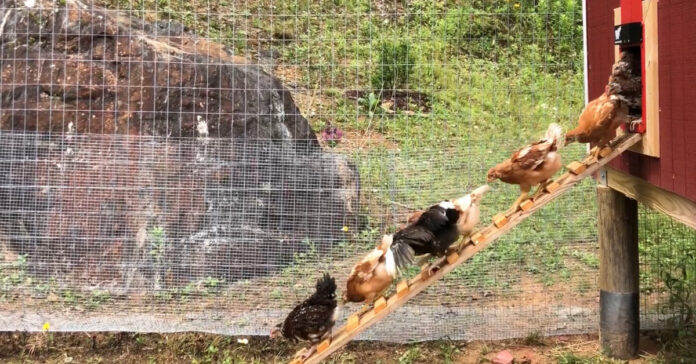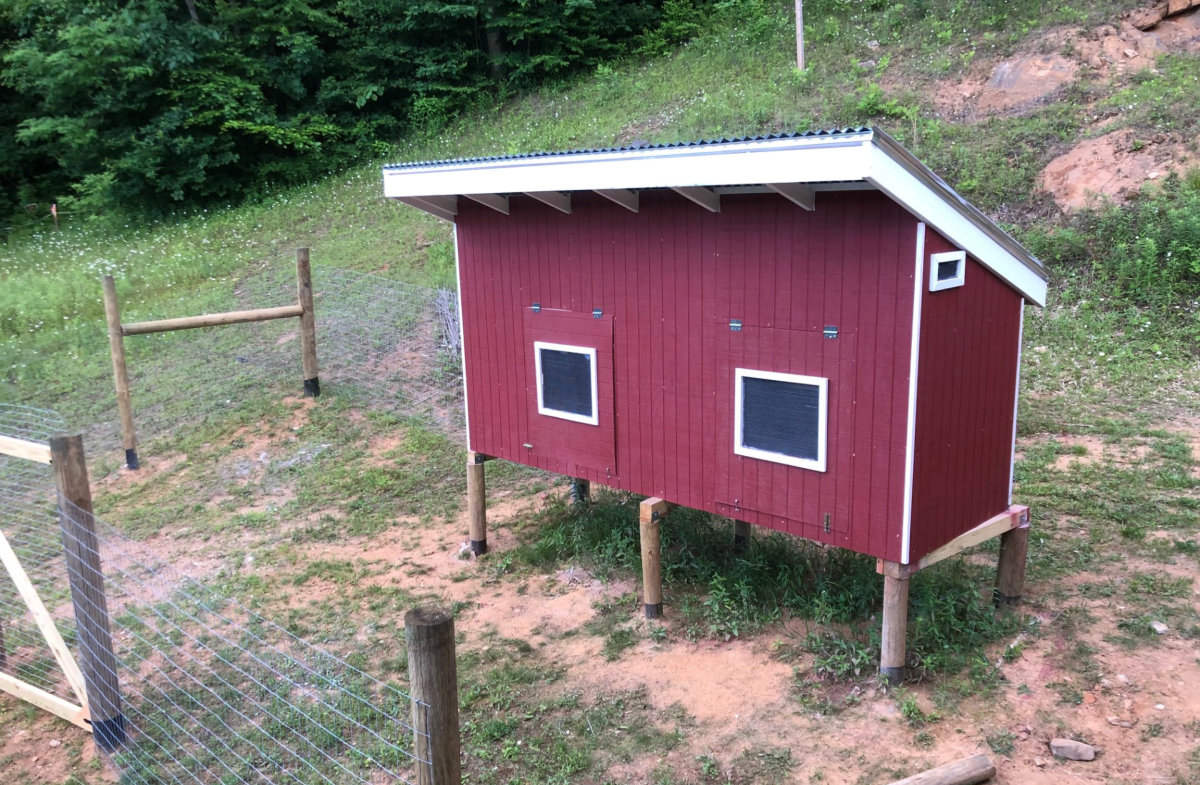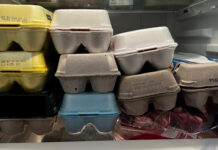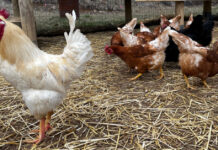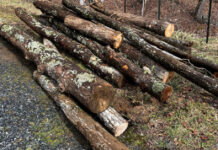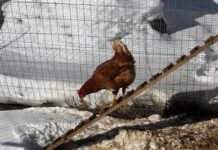Our chickens are now eight weeks old and still growing rapidly. They were fuzzy balls with legs and beaks when we got them, they grew to look like badly feathered miniature dinosaurs, and finally became recognizable as birds when they were about the size of a pigeon. Today, they are obviously chickens. Half size, yes, but clearly identifiable as chickens. They are also developing distinct personalities. Happily, all 17 have survived.
At this stage, they have little red nubs where their combs will be, and the nubs are more prominent on the bird we assume are the males. One roosters goes around chest bumping other birds. I don’t think they are celebrating touchdowns, so I have to assume he is trying to establish his dominance and position in the “pecking order.”
A Day in the Life of our Chickens
Our chickens have it pretty easy. They wake up in a safe, enclosed coop with a hay floor, an unlimited buffet of food (even if it is just one item), and water that is refreshed twice a day. As soon as I wake up, I get a great big scoop of food to top off their feeder and head out to see them. They peer at me through the hardware cloth window and make encouraging noises. I usually stop and cut off the seed heads of a few dozen big stalks of grass, grab some miscellaneous greens from the edge of the meadow, and pick some clover for them.
As I swing up the big door, the crowd the doorway, cheaping with excitement. I toss the greens into the coop, spreading them out a bit. The chickens jump on these treats, and often two will pull at the same piece of grass. The smart ones snatch up something green and run off to a corner, trying to eat it before a coop mate horns in.
While the birds are occupied, I top off the feeder and check their pan of grit. Then I shut the door, and open the other door to clean out the waterer, which gets filled with hay and occasionally poop. There’s a second water dispenser in the chicken run, which I rinse out and top off with the hose.
Then I clean up the chicken run, which mostly means raking all the compost they have distributed back into a neat pile. The chickens love digging in the compost, and they have done a remarkable job at accelerating its decomposition. On most days, I dump the contents of our compost bucket on the pile. Lately, it has included cucumber and a variety of greens.
Releasing the Chickens
Once the compost is in good shape, I push the button on the Run Chicken door and it grinds its way up. Chicken heads start popping through before it is three inches high. One of the speckled Sussex roosters always seems to be the first out, ducking under the door like he is doing limbo. This early bird definitely wants first crack at any worms. The rest of the chickens stream out in a row, running and sometimes flying down their ramp.
Before I leave, I take the small cup of six-grain chicken scratch and toss it to them. I have learned to fan it over a wide area to spread it out. Some birds head straight for it while others head for the compost pile to check out their latest treats. It’s called “scratch” because they have to scratch and search around to get it. This helps keep them busy and gives them something to do.
They spend the next couple hours scratching in the compost, visiting the waterer, running around the run looking for any new bugs, and picking up seeds and grains in the scratch.
During the heat of the day, most of them retreat under the chicken coop to lie in its shade and to enjoy the protection it offers. They have created some dust baths under there and they settle in. some wander in and out of the coop, but spend most of their time outdoors. In the afternoon, once the sun is behind the mountain and most of the run is in the shade, I visit again, bringing a large serving of greens which I toss into them. They run out to inspect it, but without the same competitiveness they exhibit in the morning.
Bad Weather
I can work nearby, using power tools and hammering nails, and they generally ignore it. If something flies over, however, they run for cover. Yesterday, a humming bird buzzed the run and half of the birds scampered under the coop. I think the other half were hoping he was an edible bug.
When there is a brief afternoon storm, they hang out under the coop. A brave bird will stick its head out, as if trying to determine if it is still raining. If I know it is going to rain most of the day, I will leave them locked inside until it lets up. With our current food and water set up, if we don’t release them or skip a feeding they will not run out of food or water. This gives us flexibility.
Sometime after 8 p.m., the last of the chickens heads back inside the coop and the door closes automatically. With the automatic door closure function, we don’t have to worry about being home on time to lock them up, which is convenient. The closing time is based on the sunset. We could program the door to open automatically, but have chosen not to do so yet. We like to maintain that control and let them out manually. I like them to see me close up and know that I bring them treats. Also, if we have to pick up or handle a bird, it is much easier to do so from the coop than chasing one around the run.
There are three roosts in the chicken coop, but most of them crowd onto the highest one. They sleep up there, tightly pressed together.
We should get eggs in another two months or so.

